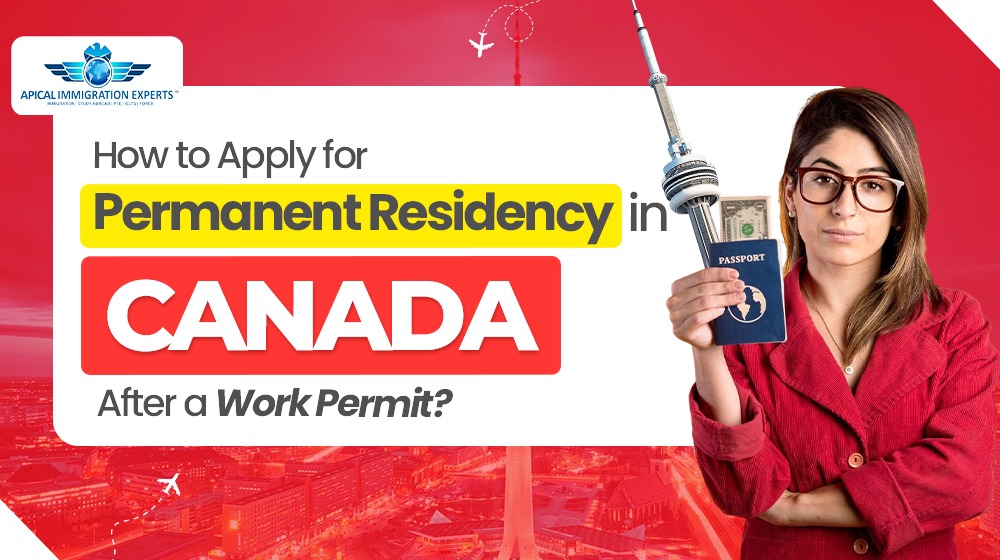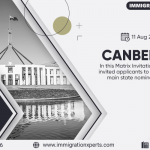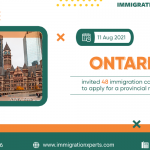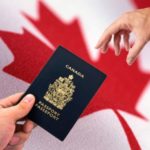Canada continues to be one of the most attractive destinations for skilled professionals worldwide. Many individuals begin their journey with a temporary Canada Work Permit, gain valuable local experience, and eventually decide to settle permanently in the country.
With a strong economy, immigrant-friendly policies, and abundant job opportunities, Canada provides multiple pathways for foreign workers to transition from temporary status to Permanent Residency (PR).
If you are already employed in Canada and planning to apply for PR, this comprehensive guide explains the main requirements, the best PR programs, the application process, and helpful tips to increase your chances of approval.
Check Your Eligibility in 60 seconds
Understanding the Transition: Work Permit to PR
Thousands of skilled workers enter Canada each year through employer-based work permits. These permits allow individuals to build Canadian work experience-one of the most valuable factors in immigration programs.
After gaining sufficient experience, many workers apply for Permanent Residency, which grants the right to live, work, and move freely across any province without employer restrictions.
Among all the available pathways, the Canadian Experience Class (CEC) under the Express Entry system is the most preferred option for individuals with Canadian work experience.
Eligibility Criteria for PR After a Work Permit
If you plan to apply for PR while holding a valid Canada work permit, you usually need to meet the following requirements:
- Minimum one year of full-time, skilled Canadian work experience
- Strong proficiency in English or French (IELTS/CELPIP)
- Educational Credential Assessment (ECA) for foreign education
- Sufficient proof of funds (depending on the program)
- Medical examination and police clearance certificate
- Meeting other program-specific criteria
These requirements vary based on the immigration program you choose, so always review the exact criteria before submitting your application.
Top PR Pathways for Work Permit Holders in Canada
Canada provides several immigration routes designed specifically for skilled workers with relevant experience. Below are the most popular options:
-
Express Entry System
Express Entry manages applications for three major federal programs:
- Federal Skilled Worker Program (FSWP)
- Federal Skilled Trades Program (FSTP)
- Canadian Experience Class (CEC)
Applicants are ranked through the Comprehensive Ranking System (CRS) based on age, education, language ability, and work experience. Higher CRS scores improve your chances of receiving an Invitation to Apply (ITA) for PR.
Professionals working in occupations listed as in-demand-especially in IT, engineering, health care, and skilled trades-usually have better opportunities.
-
Provincial Nominee Program (PNP)
Every Canadian province (except Quebec) has its own immigration pathways to address local workforce needs. If your occupation is in demand in a particular province, you may be eligible for a provincial nomination, which adds 600 CRS points to your Express Entry profile-practically guaranteeing a PR invitation.
Popular PNPs include:
- Ontario Immigrant Nominee Program (OINP)
- Alberta Advantage Immigration Program (AAIP)
- Saskatchewan Immigrant Nominee Program (SINP)
- British Columbia Provincial Nominee Program (BCPNP)
-
Atlantic Immigration Program (AIP)
AIP supports employers in the Atlantic Provinces-Nova Scotia, New Brunswick, Newfoundland and Labrador, and Prince Edward Island-to hire skilled workers for occupations in demand.
Work permit holders employed in these provinces can qualify for a direct PR pathway under AIP.
-
Rural and Northern Immigration Pilot (RNIP)
RNIP encourages immigration to smaller communities across Canada. If you are employed in a designated rural area and your work matches local labour needs, RNIP can be a great pathway for long-term settlement.
-
Agri-Food and Caregiver Pathways
Workers in agriculture, food processing, or caregiving sectors may apply for PR through:
- Agri-Food Pilot
- Home Child Care Provider Pilot
- Home Support Worker Pilot
These programs target labour shortages in essential industries across Canada.
Step-by-Step Process to Apply for Canada PR
Here’s a simplified breakdown of the PR application process:
- Check Your Eligibility
Choose the most suitable PR program based on your occupation, work experience, and language skills. - Complete ECA and Language Test
Get your academic credentials evaluated and appear for IELTS/CELPIP. - Create an Express Entry Profile
Submit your details online to receive your CRS score. - Receive an ITA (Invitation to Apply)
If your profile is selected, you’ll receive an invitation to submit your full PR application. - Submit Your PR Application
Upload all documents, fill out forms, and pay the required fees. - Biometrics & Medical Exams
Complete mandatory background checks and health examinations. - Receive PR Approval & COPR
Once approved, you’ll be issued a Confirmation of Permanent Residence (COPR).
Documents Required for PR
- Valid passport and work permit
- Educational Credential Assessment (ECA)
- IELTS/CELPIP test results
- Canadian work experience documents
- Police clearance certificates
- Medical exam results
- Proof of funds (if required)
- Employer reference letters
Processing Time and Fees
- Express Entry PR processing usually takes 6 to 12 months, depending on the program and personal profile.
- PR fees for adults are around CAD 1,365, including processing charges and the Right of Permanent Residence Fee (RPRF).
- Additional fees may apply for PNP streams or employer-driven programs.
Tips to Increase Your PR Success Rate
- Aim for a higher IELTS score to improve your CRS points.
- Gain more Canadian work experience, preferably in TEER 0, 1, 2, or 3 occupations.
- Apply for a provincial nomination to add 600 CRS points.
- Regularly update your Express Entry profile with new qualifications.
- Work with a trusted and experienced immigration consultant to avoid errors and delays.
Conclusion
Transitioning from a Canada Work Permit to Permanent Residency is an excellent step for individuals who want a stable and prosperous future in the country. With multiple pathways-such as Express Entry, PNP, AIP, and pilot programs-foreign workers have more opportunities than ever to secure PR.
If you are ready to begin your PR journey, consulting the Best Immigration Consultants in India can make the process smoother, increase your chances of success, and help turn your dream of living in Canada permanently into a reality.
Frequently Asked Questions
1. Can I apply for PR while holding a work permit in Canada?
Yes, you can apply for PR while working in Canada as long as you meet the eligibility requirements of the program you choose. Most applicants apply through Express Entry or a Provincial Nominee Program because these pathways reward Canadian work experience. A valid job offer or provincial nomination can further increase your chances. Make sure to maintain valid status during the entire process.
2. How much Canadian work experience is needed for PR?
Most PR pathways, especially the Canadian Experience Class (CEC), require at least one year of full-time skilled work in Canada. The experience must fall under NOC TEER 0, 1, 2, or 3 to qualify. Some provincial programs may accept applicants with less experience depending on labour market needs. More experience generally increases your CRS score and overall competitiveness.
3. Does having a Canadian job offer improve my PR chances?
A job offer is not mandatory for Express Entry, but it can significantly boost your CRS score. Provincial programs and employer-driven pathways may require a job offer from an approved employer. Even without extra CRS points, ongoing Canadian employment helps demonstrate your settlement potential. Strong experience plus a job offer can make your profile stand out.
4. How long does it take to receive PR after applying?
Processing times vary by program and applicant profile, but Express Entry applications are usually completed within 6–12 months. PNP streams may take slightly longer due to additional provincial processing steps. Medical exams, background checks, and document verification also affect timelines. Submitting complete and accurate documents helps avoid unnecessary delays.
5. Do I need proof of funds if I am already working in Canada?
Proof of funds is not required for Canadian Experience Class applicants. However, Federal Skilled Worker Program and some PNP streams still require you to show settlement funds. The amount depends on family size and is updated annually by IRCC. If you have a valid job offer and authorization to work, certain exemptions may apply.
Start your Canada PR process with confidence—book a consultation with Apical Immigration Experts now.
- Email: info@immigrationxperts.com
- Call us: +91-9999467686, +91-8447-696555






